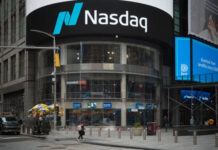Markets
Core bond yields soared yesterday after several days of easing. USTs underperformed the Bund even as economic data disappointed. The US ISM services index unexpectedly declined to 55.3 as the arctic blast disrupted the economy. Prices paid soared to the highest since 2005. ADP job growth also came in lower than expected. US bond yields jumped up to 9 bps at the long end as more attention is being drawn on Biden’s 1.9tn fiscal stimulus plan. The 10-yr yield closed above key resistance at 1.44%. The German curve bear steepened as well with yield changes varying from 1.4 bps (2-yr) to 7.3 bps (30-yr). The 10-yr variant (-0.29%) undid its Tuesday close below the -0.34% support. ECB’s Weidmann said the recent rise in yields is not too worrying in a break with concerns other ECB members voiced over the previous days. The yield surge particularly hit US stocks, with tech tumbling 2.7%. EUR/USD failed to build on its Tuesday rebound. Attempt to take out 1.21 failed with the pair eventually closing near 1.206. USD/JPY finished just north of 107 even as equity sentiment was outright negative. The UK extended several supportive measures in the near term. The corporate tax rate hike isn’t due until 2023. UK bonds tanked (yields up to 10 bps higher), but spillovers to sterling were limited. EUR/GBP slightly weakened to 0.864.
Asian-Pacific markets are under pressure this morning. China underperforms (-2.8%). Australian and New Zealand bond yields skyrocket once more with the former’s 10-yr yield (+9.7 bps) testing 1.8% earlier on the day. Markets favour the greenback amid ongoing bond and equity volatility. The dollar is well bid vs. G10 peers, including the yen. The trade-weighted DXY attempt to settle north of 91 failed again. Core bonds recoup a small bit of yesterday’s losses.
Today’s economic calendar contains US jobless claims and a Powell speech. The Fed chair probably won’t strike a much different tone compared to views offered by him or his colleagues (cf. Brainard, Daly yesterday) earlier. In any case he will emphasize the Fed’s long-term ultra-easy policy engagement. The OPEC+ meeting is interesting but probably not as significant to trading as overall sentiment. (US) equity markets are starting to look fragile. A rebound has been countered twice and the S&P500 fell below the upward trend channel yesterday. A short-term correction might be on the cards. This could but does not necessarily translate into lower core bond yields, seeing the poor and ebbing core bond recovery during Asian dealings. We think the USD might retain the benefit of the doubt if volatility remains elevated. EUR/USD is not out of the woods yet, nearing first support at 1.2046. EUR/GBP is meandering directionless in the downward trend channel.
News headlines
The National Bank of Poland yesterday left its policy rate at 0.1% and will continue to buy bonds depending on market conditions. The short-term path of the economy remains uncertain. However, further out, the NBP upwardly revised its forecasts for growth and inflation. 2021 growth is now seen between 2.6%-5.3% (from 0.8%-4.5%). The forecast range for inflation this year was raised to 2.7%-3.6% (vs. 1.8%-3.2%). The NBP sees the pace of the economic recovery still hampered by the lack of a more durable zloty adjustment. The zloty declined modestly from 4.535 to the 4.55 area, however this move was also driven by the global risk-off repositioning.
According the Beige Book preparing the March 17 Fed policy meeting, the US economy expanded modestly in the first two months of the year. Economic sentiment among business owners picked up due to the ongoing vaccinations. Most districts reported that employment levels rose (albeit slowly) and a further modest improvement is expected. Wage increases in many districts are expected to persist or to pick up over the next months. Reports on pricing power were qualified as ‘mixed’. Increases in input costs were often attributed to both to supply-chain disruptions and strong demand.













